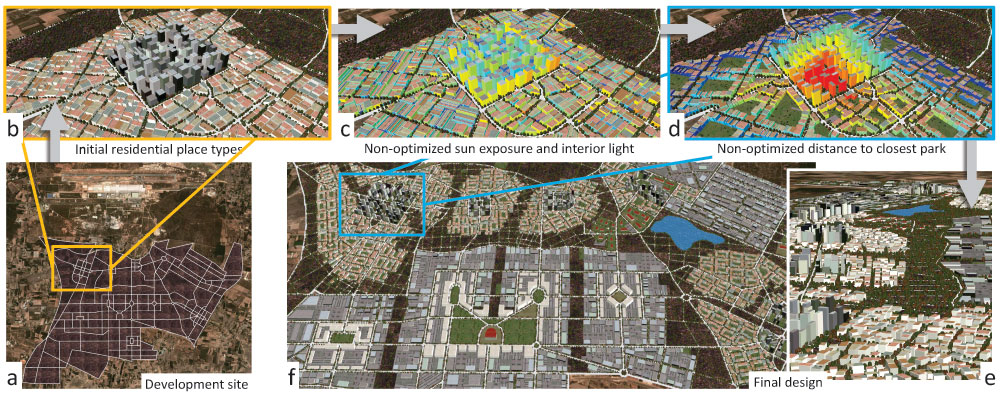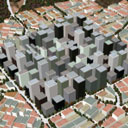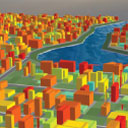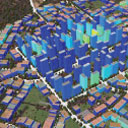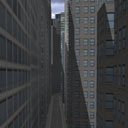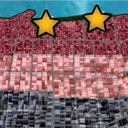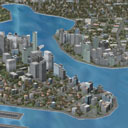Inverse Design of Urban Procedural Models
Carlos A. Vanegas1,2 Ignacio Garcia-Dorado1 Daniel G. Aliaga1 Bedrich Benes1 Paul Waddell2
1Purdue University
2U.C. BerkeleySIGGRAPH ASIA 2012
Abstract
We propose a framework that enables adding intuitive high level control to an existing urban procedural model. In particular, we provide a mechanism to interactively edit urban models, a task which is important to stakeholders in gaming, urban planning, mapping, and navigation services. Procedural modeling allows a quick creation of large complex 3D models, but controlling the output is a wellknown open problem. Thus, while forward procedural modeling has thrived, in this paper we add to the arsenal an inverse modeling tool. Users, unaware of the rules of the underlying urban procedural model, can alternatively specify arbitrary target indicators to control the modeling process. The system itself will discover how to alter the parameters of the urban procedural model so as to produce the desired 3D output. We label this process inverse design.Images & Video
Citation
Carlos A. Vanegas, Ignacio Garcia-Dorado, Daniel G. Aliaga, Bedrich Benes, and Paul Waddell. 2012. Inverse design of urban procedural models. ACM Trans. Graph. 31, 6, Article 168 (November 2012), 11 pages.@article{VGA*2012, author = {Vanegas, Carlos A. and Garcia-Dorado, Ignacio and Aliaga, Daniel G. and Benes, Bedrich and Waddell, Paul}, title = {Inverse design of urban procedural models}, journal = {ACM Trans. Graph.}, issue_date = {November 2012}, volume = {31}, number = {6}, month = nov, year = {2012}, issn = {0730-0301}, pages = {168:1--168:11}, articleno = {168}, numpages = {11}, url = {http://doi.acm.org/10.1145/2366145.2366187}, doi = {10.1145/2366145.2366187}, acmid = {2366187}, publisher = {ACM}, address = {New York, NY, USA}, keywords = {interactive, inverse procedural modeling, procedural modeling, urban models}, }
